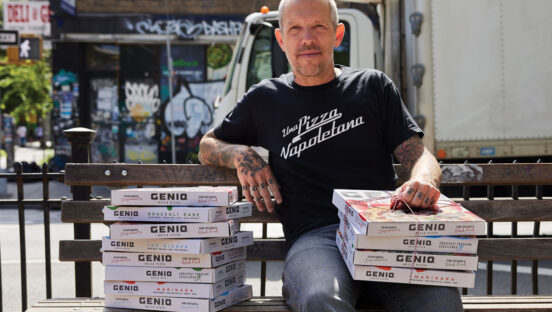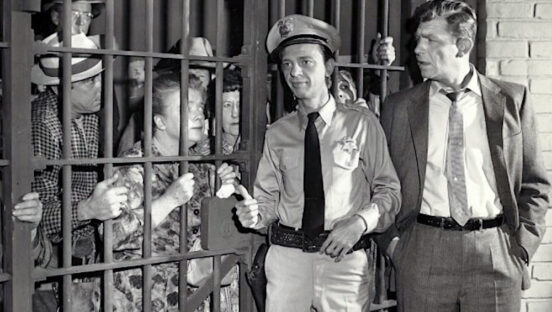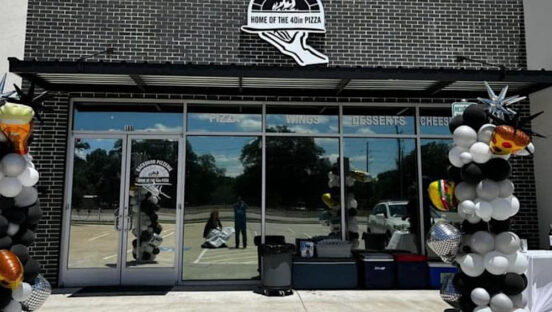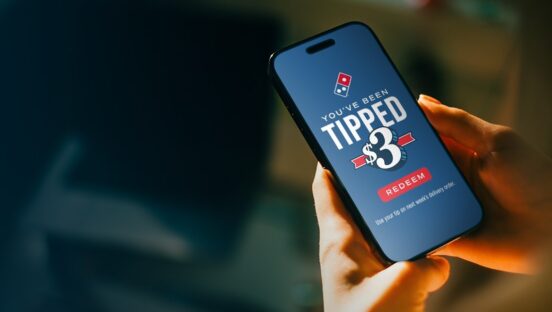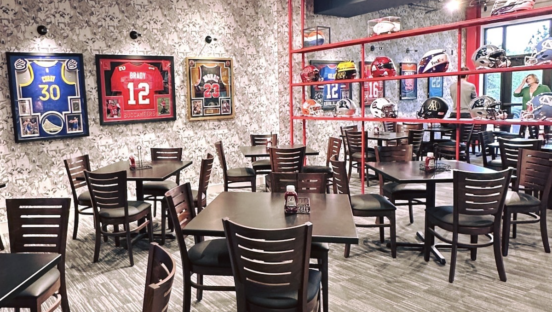By Tracy Morin
Many owners are convinced that it doesn’t get more difficult than running a restaurant. Veteran pizzeria pioneer Anthony Mangieri, owner of New York City’s acclaimed Una Pizza Napoletana, thought so, too—until he entered the frozen food biz.
Since opening his first pizzeria in 1996, Mangieri has made every pizza dough himself; to this day, the restaurant closes if he’s not present. Over the years, Una Pizza Napoletana has earned numerous awards and rave reviews, even claiming the No. 1 spot as 50 Top Pizza’s best pizzeria in the world in 2022. 50 Top Pizza also ranked Mangieri’s pizzeria as the best in the U.S. in 2022 and 2023.
No one would fault Mangieri for maintaining the status quo, but he has taken on a new challenge, launching Genio Della Pizza, a frozen pizza line, in 2023. In this Q&A with PMQ, Mangieri discusses the unique challenges of the grocery world.
“From the beginning, I asked, ‘How can I make something that, when people first taste it, that’s the worst it’s ever gonna be?’ It’s only gonna get better as I keep learning and growing.”
Anthony Mangieri
PMQ: Why expand into a frozen pizza line?
Mangieri: I guess anybody would think, “Obviously, I’m limiting my growth abilities here….Is there something else I could do to grow as a businessperson and also connect with people on a larger scale than just in my restaurant?” We’re open a few nights a week. We have super long waits with 1,000 people on the “notify” list every night, so it’s not always the easiest place to get into. Or you might not live in New York.
So I thought about different things—tomatoes, olive oil, pizza—and landed on frozen pizza. That was the start of Genio Della Pizza, about three years ago. I was doing R&D, trying to find someone that could produce it with me, because I didn’t really want to produce the pizza in the restaurant. I felt that would dilute what I do in the restaurant, so I wanted it to be separate. Instead, I could use my knowledge and, hopefully, my skill from 30 years of making pizza to create this frozen pizza. But not to be like, “Hey, this is Una pizza,” because I felt that would not be fair to my 30 years at Una. I wouldn’t want people to try it in Ohio and say, “This is what they make at Una?” Because it’s frozen pizza. It’s a completely different product.
That’s also why I didn’t name it Una Pizza or Anthony Mangieri. I named it something that was separate from the restaurant and myself. But I’m on the back of the box, and I’ve given it all my love. I go to Italy every single time we do a production run. I’m in the factory, and I make the pizza and run around driving everyone nuts, telling them that we need to turn the oven temperature higher or lower, add more cheese or less cheese, and all that. I’ve tried to give it the same attention to detail that I’ve given Una, but with the idea that it’s accessible to people outside of the restaurant.

“If you want to get into retail, figure out how to make what you want to sell scalable, before you start presenting it. Don’t take what you make, freeze it or package it, and try to get it out in the world.”
Anthony Mangieri
PMQ: Why do you produce the line in Italy?
Mangieri: I just couldn’t find anyone in the United States or Canada who had the skill set to produce it. There’s really no scalable business or co-packer using wood-fired ovens [for frozen pizza] in the U.S. And to work at scale, the ingredients need to be packaged in certain size containers—it’s just such a different world than the restaurant world. There was a lot to learn. I realized pretty quickly I couldn’t get the ingredients that I’d want to use to make the best product for the frozen line. How am I gonna get Italian tomatoes into the U.S. that are in the right container size that we use in a co-packers setting—plus the mozzarella, all this stuff? It just was impossible.
PMQ: What have you learned about the frozen pizza and grocery world?
Mangieri: The first thing I learned—and I’m still trying to wrap my head around it—is the sales side. To most of us who have restaurants, the food and quality are No. 1. This business is so different. It’s not even about the food. Food stores, brokers and the whole landscape of the CPG (consumer packaged goods) world are pretty heartbreaking when you come from the restaurant world, where you’re used to being around other like-minded people, where chefs talk about the things that get them excited. [In CPG], it tends to be more like, here’s the promos we need, here’s our margins we need every month, and you need to do this, this and this, or you’re not coming into the store, and that’s it. They don’t necessarily even care what it tastes like. Ultimately, I think that’s been the hardest thing for me to learn and understand. I’ll send samples to food store buyers, and they don’t even like it. They like the big legacy brands, where it’s super salty and has a taste that I don’t personally identify with.
The other crazy thing was working at such scale—approaching it like I would the pizzeria, just way bigger. What do I do in the restaurant when the dough isn’t coming out right or the oven isn’t working right? Then trying to understand, learn and grow to be able to manage that at scale—with a lot of people also handling the product, which was new to me, since I’ve had my two guys that have been with me for years, and no one else ever touches the product. To try to let go of that and deal with this kind of world and be better at delegating, it’s been a lot for me to learn.

PMQ: What advice would you offer for restaurateurs trying to get into retail?
Mangieri: I think it’s about learning how to delegate and how to make what you make scalable. That’s why it took so long with the R&D. I didn’t want to come out with a product that, let’s say, I made at the pizzeria on the days we’re not open and sold frozen. It’d be amazing, but then, say I get it into a Whole Foods and want to go national. Then it’s like, “OK, let me now go back to the drawing board and find a co-packer and figure out how to make this scalable.”
From the beginning, I asked, “How can I make something that, when people first taste it, that’s the worst it’s ever gonna be? It’s only gonna get better as I keep learning and growing, but it’s not gonna get worse.” So I get into Whole Foods, and they’re like, “We love this.” One of the buyers told me it’s their favorite product on their shelf. And that’s really empowering. I’m like, all right, now we’re in a good spot, because I know this was the worst it’ll ever be—I already did all the R&D, and it’s already scalable.
If you want to get into retail, figure out how to make what you want to sell scalable, before you start presenting it. Don’t take what you make, freeze it or package it, and try to get it out in the world. That’s not going to be a fair representation of what you’ll end up doing when you do scale it. It’s two completely different businesses.
“You go to food stores and pay to get in. But it costs millions and millions of dollars to do it, and we’re not that.”
Anthony Mangieri
PMQ: What was the process like in terms of making the recipe?
Mangieri: In the beginning, the main focus was the dough. We spent probably a year going back and forth, trying to figure out how we can make it have flavor and interesting texture and depth, hold up when it’s frozen, and not add preservatives. I would rather not have it last for three years and have a huge shelf life—instead, a year-and-a-half shelf life frozen, with no stabilizers, nothing in it.
Once we figured that out, which took at least a year—and we still work on it—I would say probably the biggest thing was how far the hydration level should go in the dough. The hydration levels are insane; we’re running sometimes at a 90% hydration, and the dough is never refrigerated. A lot of people push the hydration, but then they refrigerate and proof it that way for 24, 48 hours. Once that goes in the fridge, the hydration level is not the same to handle as if it were a high hydration and it’s never been refrigerated. And that’s what we work with at Una—it’s super difficult, sometimes extremely stressful.
I wanted to try to do that in frozen pizza and quickly realized it was impossible. You have a lot of people handling the dough, and every single ball is hand-opened. So when the balls come down the line, they’ll get picked up and hand-stretched. Obviously, you’re not going to get people in that setting who can handle that level of hydration and work at the speed that it’s going through the line and be able to produce that volume every day. And once you cross that line of hydration, dough can’t go through the machine—it gets stuck on all the roller belts and makes a disaster. So that was what we spent the first year on.
PMQ: What about the toppings?
Mangieri: That was much easier. It was really just trying to use the same flavor profiles and things that I’m excited about at Una, then finding producers in Italy that could produce and send it to our co-packer in the right sizing, consistency and standards, to get non-GMO and all the declarations that we need, and everything else. That was the next phase.
Once we figured that out, for the first four SKUs, I wanted to do the three that are the core of what we do at Una: the Margherita, the Marinara and the Bianca. And then the fourth SKU is a special at Una—every week, we have one special—and I thought it would be cool to expose people outside of the Northeast to broccoli rabe. And for people who want a vegetable, I didn’t want to come out and be like, “Oh, here’s bell peppers on a pizza.” I wanted to do something that felt a little bit more in line with our values at the restaurant.
PMQ: What are your ultimate goals for Genio in terms of growth?
Mangieri: Our goal right now is to just keep getting better at what we’re doing, understand and navigate the landscape and grow in a way that’s meaningful and makes sense. We want to make sure we win in any retail store we go into. It’s a very, very difficult landscape to work with, especially in frozen pizza. Getting into the retail space is a nightmare, but frozen is the worst of all of it. It’s the most expensive to work within and the most expensive to transport and store. And the food stores have a lot of fees—slotting fees and things—because the freezer section is their most expensive section in the store. To get on the shelf, somebody else has to get kicked off. So you need to prove why you should be there. If you’re not performing, they kick you off.
We’re not a huge company—we’re not Rao’s, for example, which launched a frozen pizza and was in every single food store in the U.S. overnight. Few can compete with the volume of money that’s being dumped into the market. You go to food stores and pay to get in. But it costs millions and millions of dollars to do it, and we’re not that. We have to be more thoughtful, try to grow in a way that makes sense, and make sure the retail stores we end up in have the customer base that’s going to care about getting an $11.99 frozen pizza that’s handmade in Italy, with buffalo mozzarella and fresh basil. That’s our growth plan right now.
Tracy Morin is PMQ’s copy editor.

